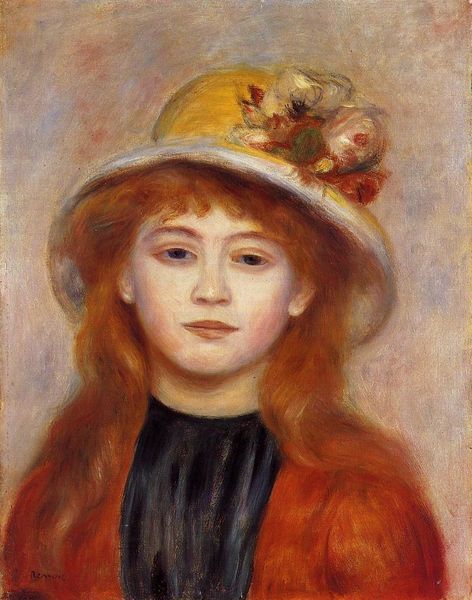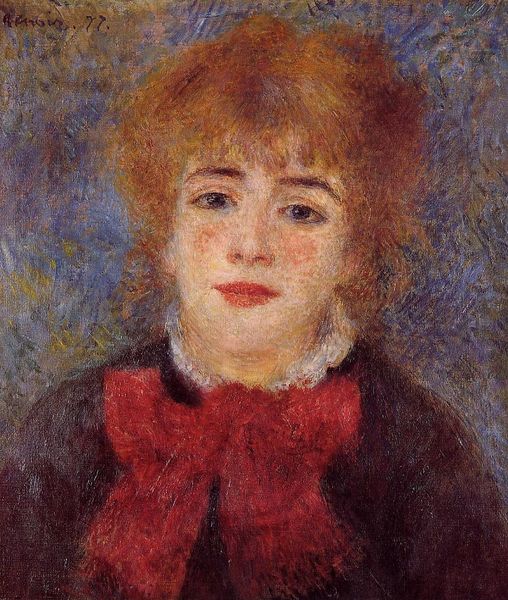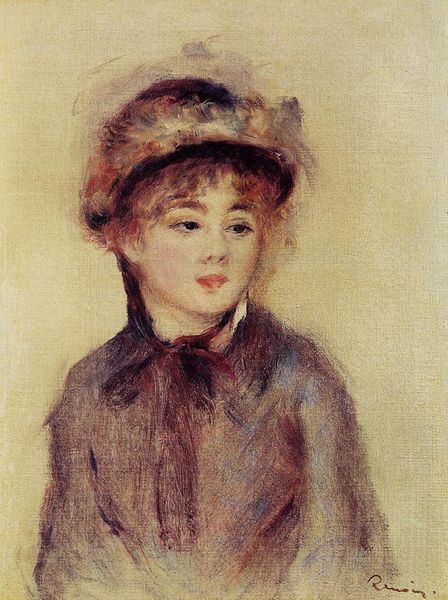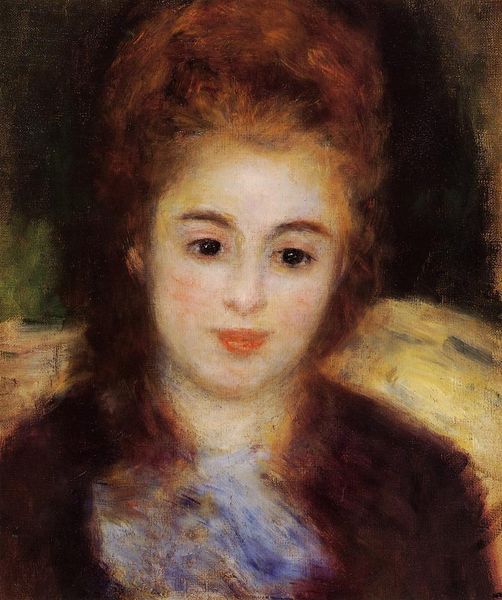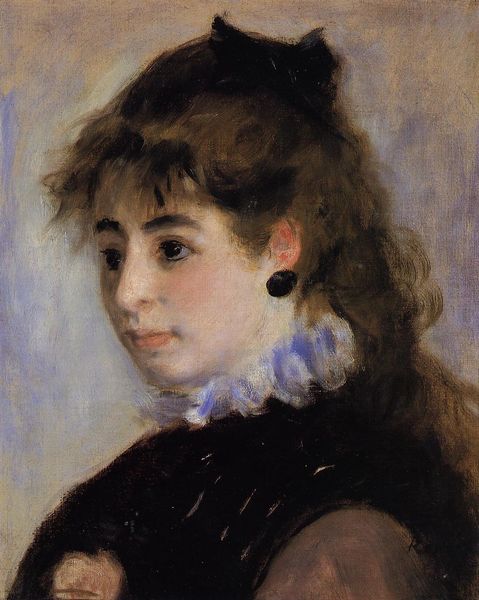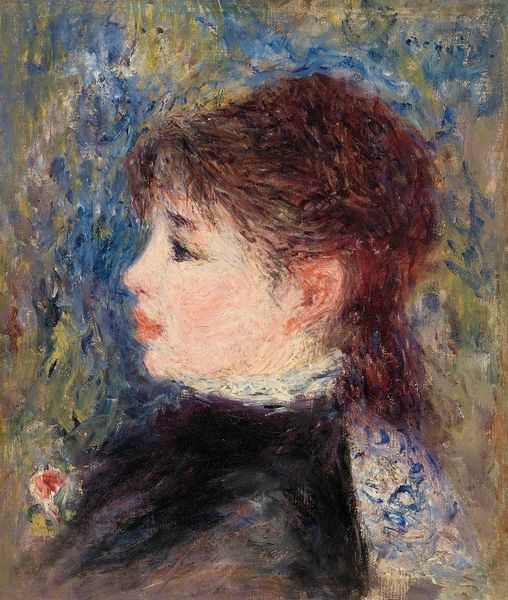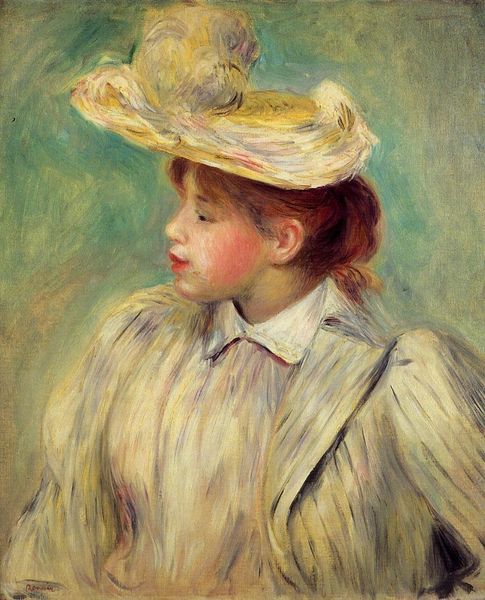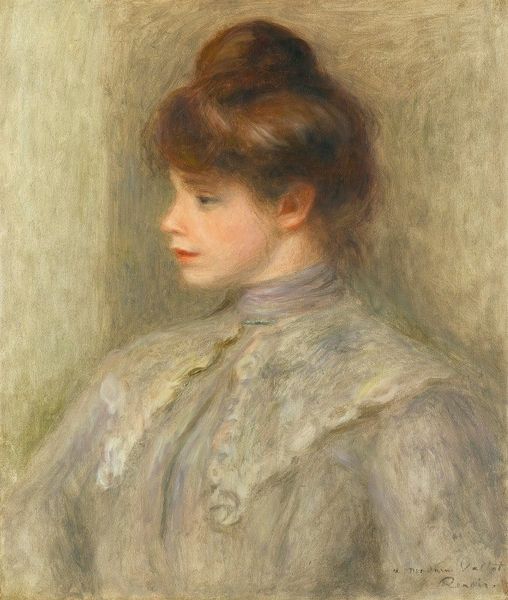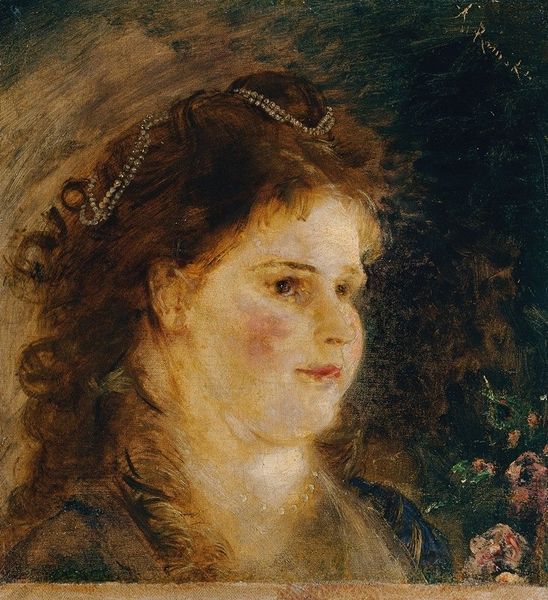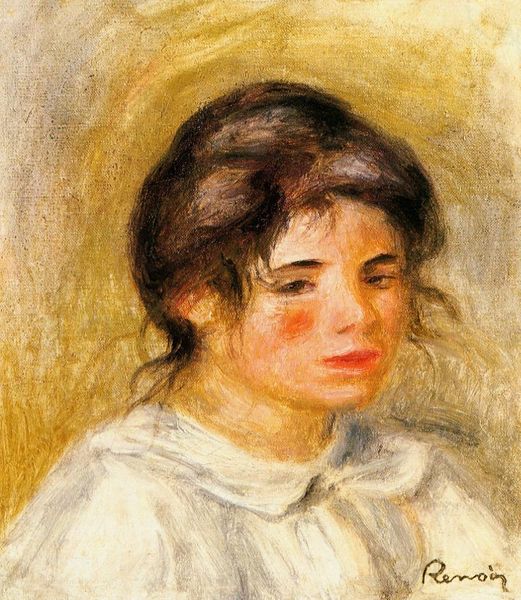
Copyright: Public domain
Curator: Ah, Renoir's "Nini Lopez," painted in 1876. It has such an intimate presence, don't you think? Editor: It's striking. At first glance, all I see is impasto. Look at the density of the oil paint; it gives her a tangible weight. You can almost feel the texture of her skin. Curator: Absolutely! Renoir was fascinated by the way light played on skin, particularly that luminous quality of a woman's complexion. Notice how the delicate strokes create this shimmering effect? It almost feels like she could breathe. Editor: It’s all about the materials for me. I imagine Renoir in his studio, experimenting with pigment consistencies to achieve the pearly softness and luminosity of skin. Consider how labor-intensive the milling and blending of oil paints were back then! Curator: True! It's fascinating to think about all the hands involved, isn't it? And Renoir uses these soft, blended tones—almost blurring the edges. It feels as if he wanted to capture the fleeting impression of her beauty. He renders her thoughts and essence palpable on the canvas. I imagine a moment of private reverie. Editor: Well, all those strokes require incredible manual dexterity and the production of specialized tools. These aspects add dimension, especially considering how artistic labor wasn’t really valued as 'real work' back then. The question is, where did Renoir source these supplies and how readily available were they in Parisian markets? Curator: I suppose we could delve further into the history of art material production and the Parisian markets of the late 19th century... But now it invites us into a softer, more sentimental realm. It whispers secrets about the human experience and her spirit. It truly is amazing how a bunch of pigment daubed on linen has such expressive power. Editor: Indeed! Looking closer, it prompts me to think about materiality and technique more, it enriches how one values artistic endeavors. Curator: It's the way he combines the fleeting and the tangible that stays with us. Editor: Absolutely! Examining the materials and process invites us to value not just the vision, but the hands that shaped it.
Comments
No comments
Be the first to comment and join the conversation on the ultimate creative platform.
